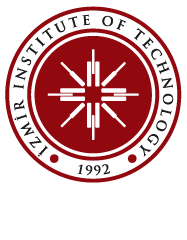Courses Offered by Bilge Karaçalı
EE101 Introduction to Electrical Engineering
Overview and principles of some topics like circuits and systems, optics, image processing, microwave, speech processing, communication, control systems will be coveredwith various instructors.
EE430 Introduction to Systems Biology
This course will begin with a broad description of molecular organization of living cells. The signal transduction networks and the regulation of gene transcription will be studied with regards to molecular circuits modeled by kinetic equations. Mathematical aspects of the development of robustness and functionality will be overviewed.
EE434 Biomedical Signal Processing
Biomedical signals, types and their sources; Sampling and aliasing in biomedical signals; A/D and D/A conversions; Fourier analysis and applications on biomedical signals; Time-frequency domain methods: Wavelet transformation, Wigner-Ville distribution and their applications in biomedical engineering; Filtering: FIR and IIR filters and their biomedical applications: Noise removal, signal compensation, etc.; Interpolation methods and algorithms; Spectral estimation and applications in biomedical engineering; Matched filtering and
applications. Independent component analysis and blind source separation: Applications on EEG signal analysis. Nonlinear models for biomedical signals.
EE436 Mathematical Foundations of Signal Processing and System Control
Introduction to set theory. Metric spaces. Neighborhood and continuity. Convergence of sequences. Normed vector spaces. Completeness, Banach spaces. Linear operators and functionals. Inner product spaces, Hilbert spaces.
EE549 Biomedical Image Analysis
Bioimaging in histopathology. Digitized histologic slides: sectioning of tissue samples, immunohistochemical staining, image acquisition. Preprocessing of histology image data. Tissue segmentation. Region segmentation. Segmentation and morphological characterization of cell nuclei. Abnormality detection via pattern classification. Analysis of three-dimensional radiological sequences. Format conversion and preprocessing. Co-registration and lesion detection. Computational anatomy via deformable registration. Comparative group studies: statistical parametric mapping, high-dimensional pattern recognition. Computational anatomy in four dimensional sequences.
EE550 Computational Biology
This course will begin with a broad description of cellular organization in a molecular biology perspective including nucleic acid and protein structure. Computational methods for pattern detection and clustering will be introduced in the analysis of amino acid sequences of proteins. Probabilistic models of genetic evolution will be developed along with sequence alignment and motif detection algorithms. RNA and DNA analysis with microarrays will be discussed.
